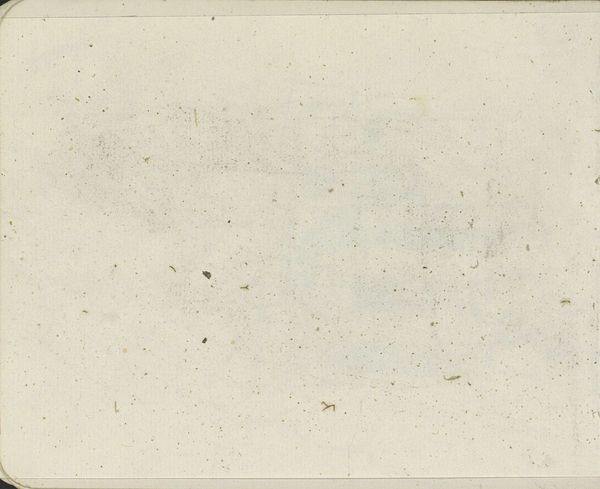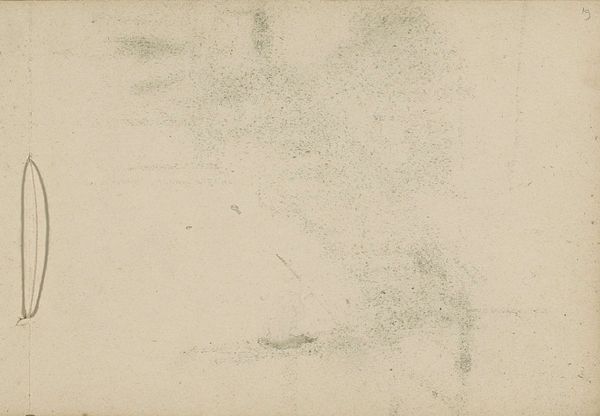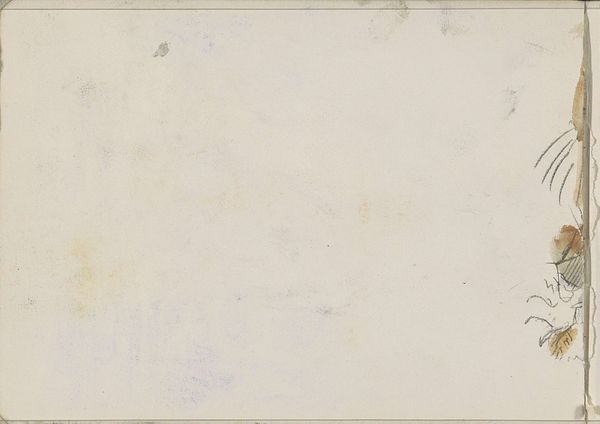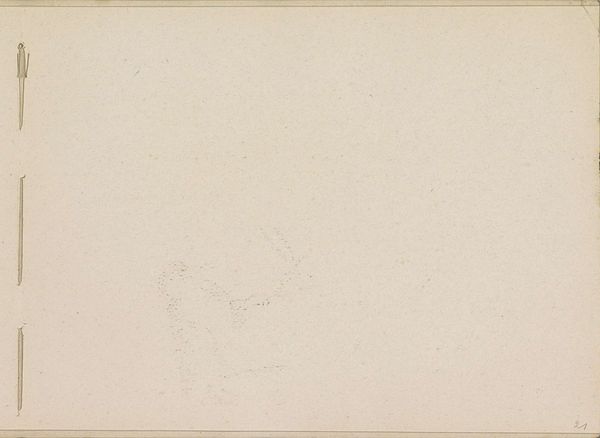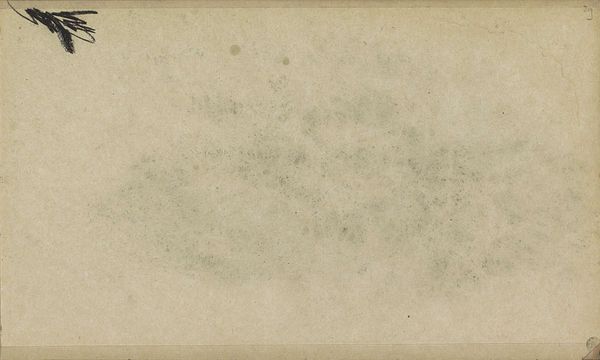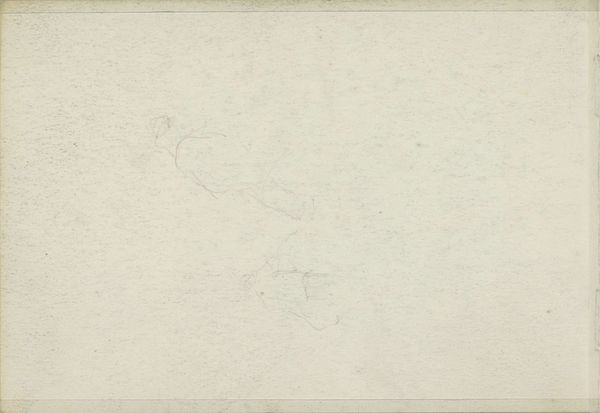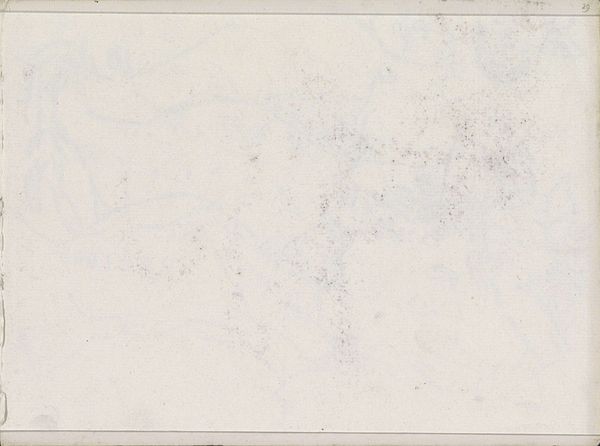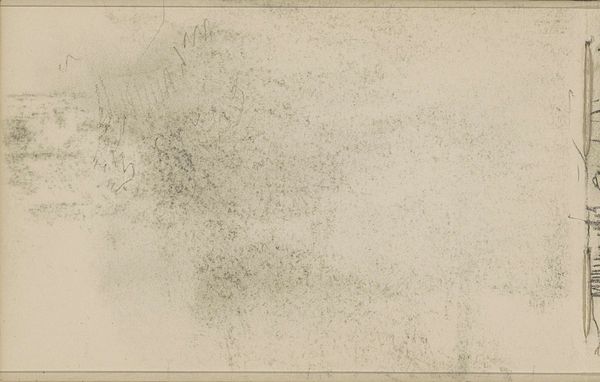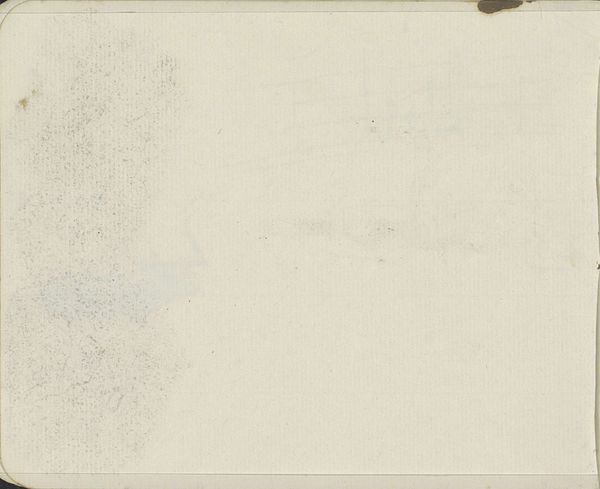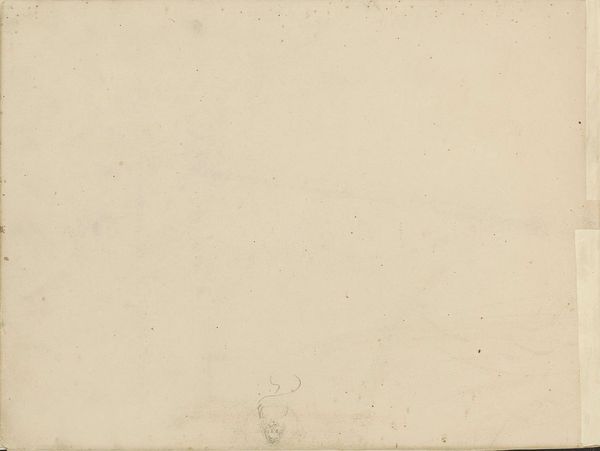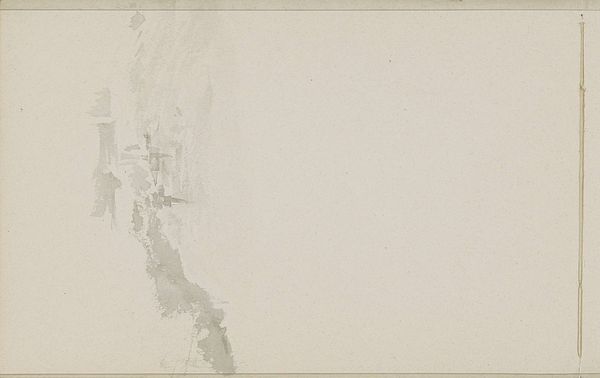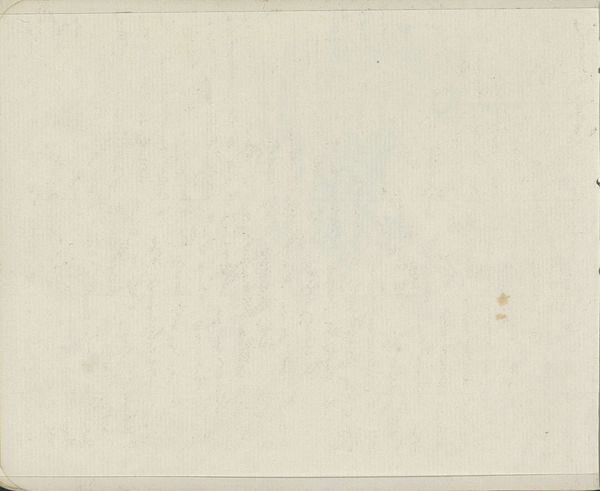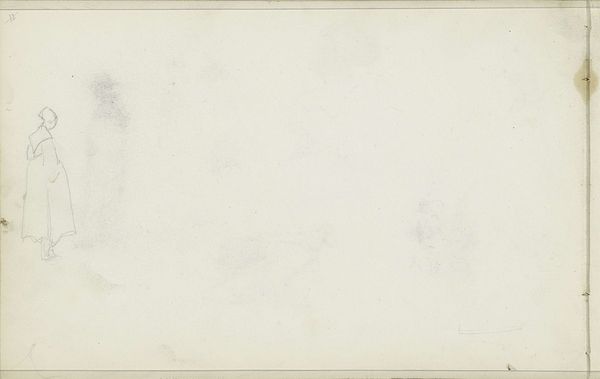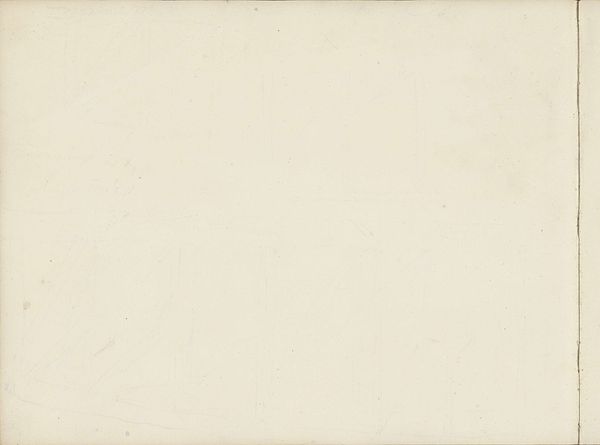
Copyright: Rijks Museum: Open Domain
Curator: At first glance, it seems simple. Spare, even. Editor: Indeed. What we have before us is a pencil drawing on paper titled "Landschap," attributed to Johan Antonie de Jonge and thought to have been created sometime between 1881 and 1927. Its character leans more to Impressionistic studies. Curator: Well, calling it “spare” might be an understatement! There's this vague cluster of lines on the left, seemingly trees or foliage. Then there's what appears to be watercolor effect occupying most of the field that offers just a vague atmospheric perspective. I can’t help but focus on the labor of the paper and the craft it represents. Editor: An interesting counterpoint. I’m more inclined to note that, viewed through a formal lens, one observes how this work challenges the very notion of "landscape." It dismantles the conventional idea, presenting us instead with a meditation on mark-making, texture, and the interplay between line and the vast, open space. Notice how the composition encourages our eye to roam freely. Curator: Roam freely into a void, perhaps? Jokes aside, look at the support — the grain of the paper shows it had probably some kind of industrial processing that enables it to receive those pencil marks so faintly. It's all integral to how we perceive the image. It isn't just "landscape"; it is the convergence of technique, process, and what was considered innovative manufacture for the epoch it occupies. Editor: Yes, you rightly observe the tension between material actuality and illusion, an ambiguity between suggestion and substance. De Jonge is provoking consideration of what is "real" versus "represented". In some way, this piece transcends beyond a representational image. It achieves a visual language of pure emotion. Curator: To see the human connection in making a landscape from pencil and processed pulp—I see a conversation between material possibility and subjective engagement in an artwork made over a hundred years ago. Editor: Precisely. Its simplicity challenges the spectator. We, as well, engaged in challenging views.
Comments
No comments
Be the first to comment and join the conversation on the ultimate creative platform.
